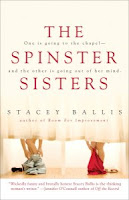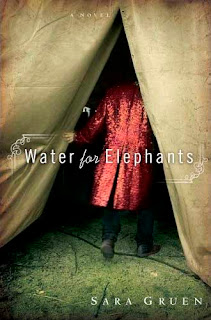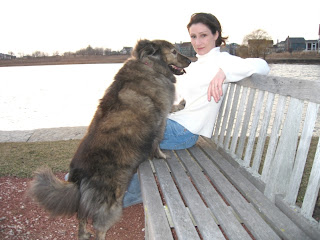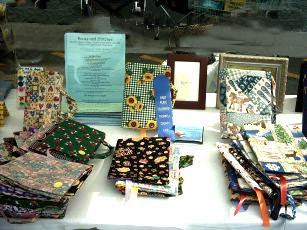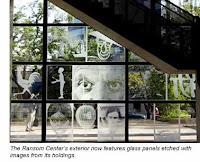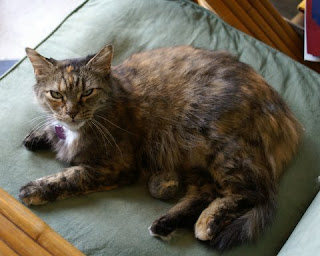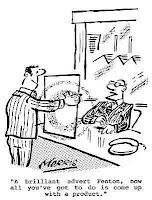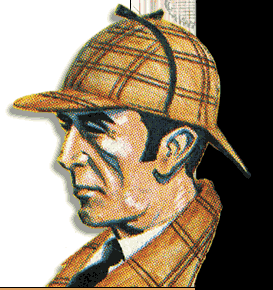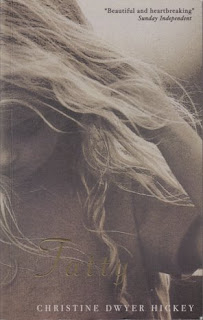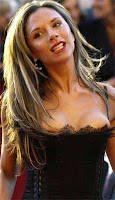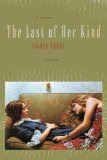Interviewed by
Melissa

It's a bird! It's a plane! No... it's Melanie Lynne Hauser, author of recently published Super Mom Saves the World. It's just her second book, a sequel to Confessions of a Super Mom, and with it she's poised to make a splash in the world of women's fiction. Estella's Revenge managed to corner the busy author for a cyber chat about her books, writing and life in general. Melanie hails from Chicago and also runs a blog,
Refrigerator Door, where she chats about her books, her life, and whatever else comes to mind.
Thanks, Melanie!
MF: How did you decide to become a writer? Is it something you've "always" wanted to do?
MLH: I didn't really start out wanting to be an author. I wanted to be an actress, really, and tried to pursue that for a while, before I met my husband. But I was always, always a voracious reader, and I think that's the best education a writer can have, frankly. I'm always astonished by how many people tell me that they've always dreamed of being a writer - yet when I ask them what was the last book they read, it's a total blank. They're simply not reading contemporary literature. And that's just so wrong.
MF: Where do you get your inspiration for stories?
MLH: In life. Everywhere, really - I think I'm a great observer, often the person hanging around at the back of the room just watching everyone and everything. The smallest remark can get me thinking and imagining, and that's how stories are born.
MF: Which is more difficult writing or re-writing? How much rewriting do you do?
MLH: Writing the first draft is always hard for me; I feel I'm at my most creative when I'm going back and revising and adding. I always have to add to my first drafts; they're very bare bones. However, during the entire process, I generally end up with a Word Document called "Cut Stuff" that's just as big as the document for the polished manuscript. So I do cut quite a lot, and am pretty ruthless about it; I don't fall in love with my writing so much that I can't throw it away, if necessary.
MF: Do you have trouble finishing a story, or are you always looking forward to the next one?
MLH: I'm always looking forward to the next one. I love the one I'm writing, but as soon as I type "The End," I'm eager to open a new document and type "Chapter One."
MF: How often do you write when you're working on a book? When you're not?
MLH: Well, the truth is I'm almost always working on a book. So I don't know how to answer the second part of this! When I'm writing a manuscript it varies; I generally start out writing a couple of hours a day, just to get myself disciplined & thinking; then after a certain point I can pretty much write whenever, wherever I have a spare moment. And there's usually a point where I go up to my room and shut the door and leave my family to their own devices - with the pizza delivery guy's number on speed dial! I do try to write something every day, except on weekends, usually; I never tell myself, however, that I need to write a certain amount of words every day.
MF: Do you have a favorite place to write? Any writing "rituals"?
MLH: Actually, I tend to move around a lot. I have a laptop, which was the best purchase I ever made for myself. I'll write one book in my bedroom, but when I start the next one I may have a sudden itch to write in the living room. So I roam. I don't really have any kinds of rituals.
MF: Why did you decide to write a book for women/moms?
MLH: Because those issues are the ones that do occupy most of my Deep Thoughts! It's my life, and the lives of women I know and understand. But I don't think I'll only write these kinds of books; I have so many stories to tell and they're not all about moms and motherhood.
MF: How did you come up with the idea of Birdie as a super hero?
MLH: I wanted to write about an ordinary woman, someone you wouldn't really look at a second time. But that's hard to do, do, in an interesting way! Until I realized that that's what superheroes are, really - their secret identities are almost always self-effacing. So I decided to write about this ordinary woman thrust into an extraordinary setting - and the superhero journey also really mirrors the journey we mothers take. We're just going along, thinking of ourselves, and then - wham! Suddenly our bodies change, we're using them in unusual ways, and the world is a bigger, scarier place than it used to be. Now, that's either a superhero - or a mother!
MF: I feel the tone of Super Mom Saves the World is more serious than Confessions. Was that intentional? Why?
MLH: Really? I didn't do that intentionally. But the fun of the first Horrible Swiffer Accident couldn't be recaptured in the second book, obviously - so maybe that's why you sense the different tone. The fun and surprise of that event really did set the tone for the first book. But I still hope the sequel is fun - I think it is.
MF: One of the quotes on the back of Super Mom Saves the World states that "[She] is also a critic of our overly high expectations of moms and our abysmally low standards for our culture and its leaders." Do you see your book as a commentary on the lives of American women/moms today?
MLH: Yeah, I do, in a way. I wrote the first book, in part, as a reaction to a certain kind of "Mommy Lit" I just find hard to take, except in small doses. The "Nanny Diaries," "I Don't Know How She Does It" kinds of books, where the mother is this high powered executive with a nanny, a caterer, and a staff - these books were being heralded as this new kind of literature that really talked about what it's like to be a mother today. And, well - I don't think so! I think they're so unrealistic and not particularly appealing, and certainly not how the women I know live. I wanted to write a book that was the direct opposite of those kinds of books! I wanted to show how hard it is to be a mother, and how the rewards aren't always evident, right away. "Super Mom" is almost used ironically in these books - the point being, there's no such thing.
And as far as cultural leaders - well, yes, I had a bit of fun at their expense!
MF: One for the Kansans out there: why did you decide to set the books in Kansas?
MLH: I thought the book just couldn't be set on either coast. It's not that kind of book - in other words, it's realistic! (Well, as realistic as a book about a superhero can be.) I wanted it to be set in the heartland, and it's kind of an homage to Superman, who was, after all, raised in Smallville, Kansas.
MF: Why did you wait until the end of the second book to have Super Mom learn to fly?
MLH: Birdie’s ability/inability to fly is probably the number 1 question I get about the books. By the end of the first book, she still can't fly. And since I wrote that book not knowing that there would be a sequel, I suppose it’s safe to assume I didn't want her to fly in the first place. But when the sequel came to be, I knew that, since this was a big concern for a whole lot of people, I'd probably have to have her take flight by the end of that one.
So why didn't I have her fly in the first place? Well, for a lot of reasons, frankly. Number one, I think, was because that was the one thing she dreamed about, the one thing she wanted to be able to do as a superhero and it’s always interesting to deny your characters these kinds of hopes and dreams. It’s interesting to see how they react to not getting everything they want because life is like that, you know. And even in a novel where the heroine shoots Swiffer cleaning fluid out of her fingertips, I wanted to keep it real. I hate novels where everyone gets what they want in the end.
Another reason, too and she talks about this in the first book is that she’s the first superhero with children. Or at least the first one who had children first, then became a superhero. And having children really makes you mindful of your own mortality, and I thought that because of this, because she knew that if anything happened to her, her children would be left alone, she was unable to shake off the maternal ties that bind her to the earth. She was unable, mentally, to allow herself to fly, because of all the people who need her back here on the ground.
Now, so why did I let her fly in the second book? Well, first of all, because it bothered so many people that she couldn't. And because I thought she'd deserved it by then. She also had more self-confidence and assurance in her abilities. And also because her children are getting older; they’re taking short little flights of their own, now, into adulthood, leaving her free to soar on her own.
I think, though, the main reason is because by the end of the sequel, she’s found her true love someone who’s not threatened by her strength; someone who’s content to wait patiently for her, and even try to catch her if she falls. So her heart is soaring and so, by the end of the book, is she.
MF: I read parts of Confessions of a Super Mom out loud to my husband. He was impressed with the number of inside comic book and superhero jokes. Is this something you picked up while writing the book, or did you start with a working knowledge of comic books and super heroes?
MLH: I think anyone growing up in this country in the '60's and '70's couldn't help but absorb some of the comic book/cartoon superhero culture. I think it's part of our American mythology. So I had a basic understand but for some of those true insider jokes and references, I called on my panel of experts - husband, brother and sons!
MF: What's your favorite book? What did you read as a child? What did you read to your children?
MLH: My all-time favorite book is "Howards' End." I just think it's perfect. As a child, I seemed to have jumped right from middle-grade books - I remember the Betsy/Tacey books fondly, as well as the "Theatre Shoes" and "Ballet Shoes" books - right to adult books. I kind of bypassed the whole Judy Blume stage.
I read a lot to my sons, of course - nursery rhymes, "Goodnight Moon," etc. Then at a certain point we had family reading nights, where we all just had to pick a book and turn off the TV. But I'm not sure any of this did any good! Both sons are video game fanatics and as a matter of fact, my oldest son will be in college next year and his major is - video game design!
But I take comfort in the fact that they've both been in honors English classes throughout their school years.
MF: Who, or what, inspires you?
MLH: Oh, everybody! Seriously - anyone who's working hard, caring for others, trying to pursue happiness and love. I'm not so fond of people who feel they're entitled to - well, anything. There's a lot of that, unfortunately, in the world. But people who work hard, and stay humble - they're my inspiration.
MF: As a mom of two teenage boys (whew!) and a writer, how do you keep your sense of humor?
MLH: How do you NOT have a sense of humor with teenaged boys! Seriously - you either look at their bathroom and cry, or you look at it and think, "This is going to be such a funny blog post!"
MF: Where did you go to school? What did you major in?
MLH: I was a drifter. I dropped out of a couple of schools - DePauw University, then Indiana University in Indianapolis. Unfortunately, I didn't think to study what I was passionate about - at that time, theater - and so I just wasn't inspired in school. I dropped out and acted in local and regional theater for a few years, then I met my husband, then we had children - and suddenly I was in my mid-thirties, with no career to speak of. That's when I turned to writing. I truly believe that living life - and reading great books - is the best experience for an author. If you're not out there living, what do you have to write about?
MF: Do you have a mentor?
MLH: Not really. My literary agent is a huge source of inspiration & support but as far as a true mentor, I can't really think of someone.
MF: What's your favorite joke?
MLH: OK, here's a secret - people who write humor are not always great joke tellers. I can't think of a joke to save my soul - but I can always be counted on for a well-timed quip when the situation calls for it.
MF: Do you have a favorite super hero (other than Super Mom)?
MLH: I think Spider-Man is my favorite. I have no idea why, other than he was really so tormented by the whole experience, before he figured it out. And I admire that in a man - I'm always drawn to the tortured souls!
MF: What advice would you give an aspiring writer?
MLH: Read. READ!!! Read what is being published TODAY - not 50 years ago. And understand that a good author has a lot of stories to tell; if one manuscript doesn't get published it's not the end of the world, because there's always the next one. You have to keep writing, no matter what.
MF: Any future plans for other books?
MLH: Always! I have a manuscript on submission now, and I just sent 100 pages of something new to my agent last week.



